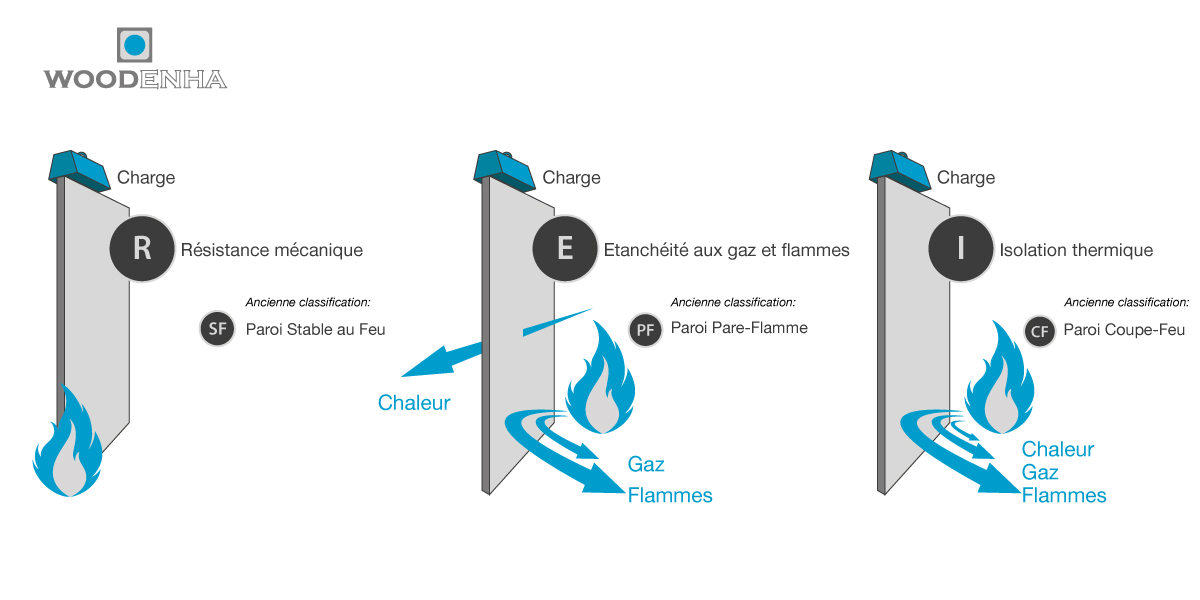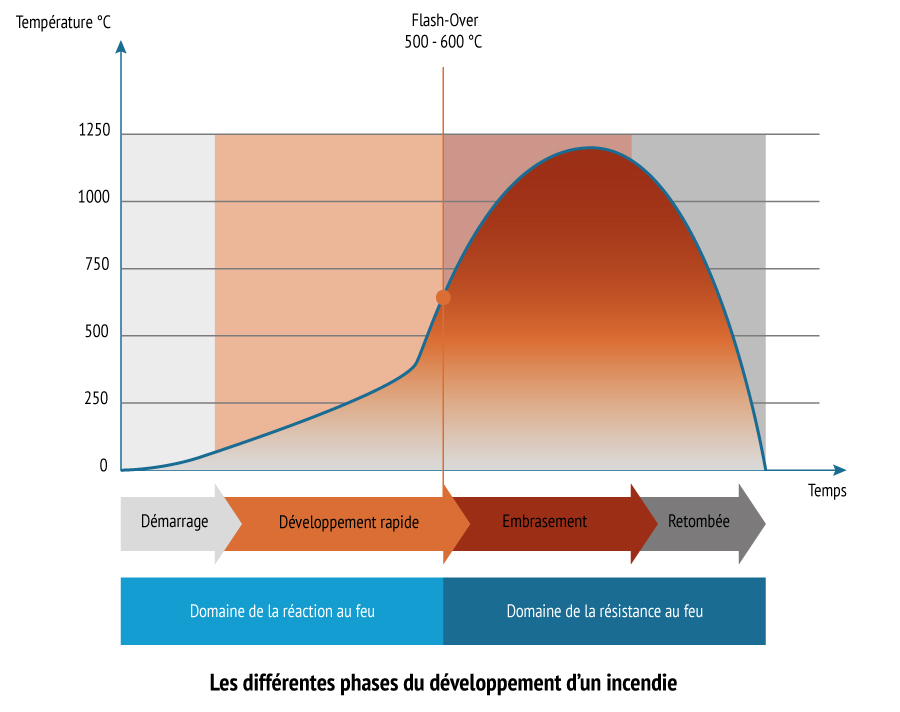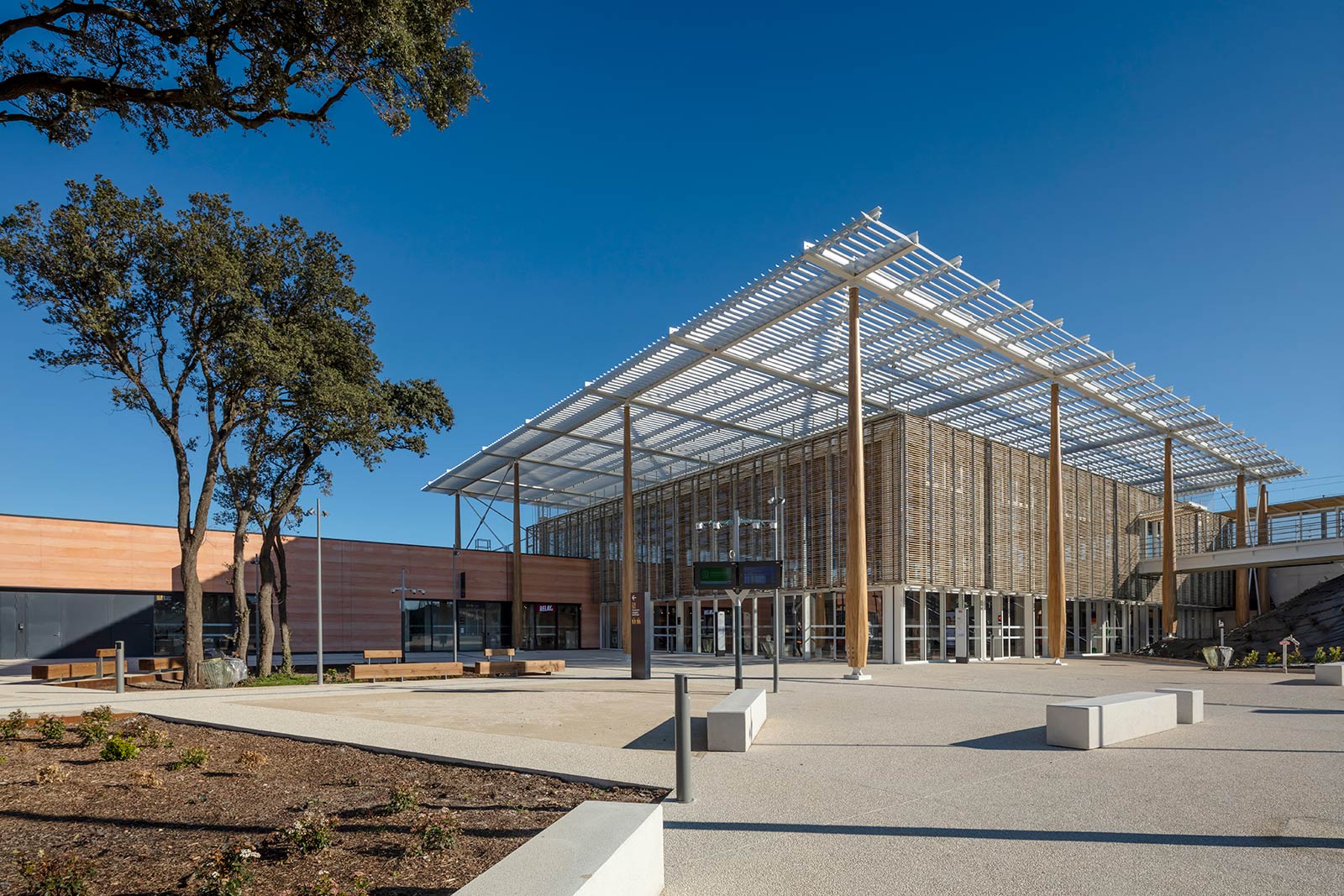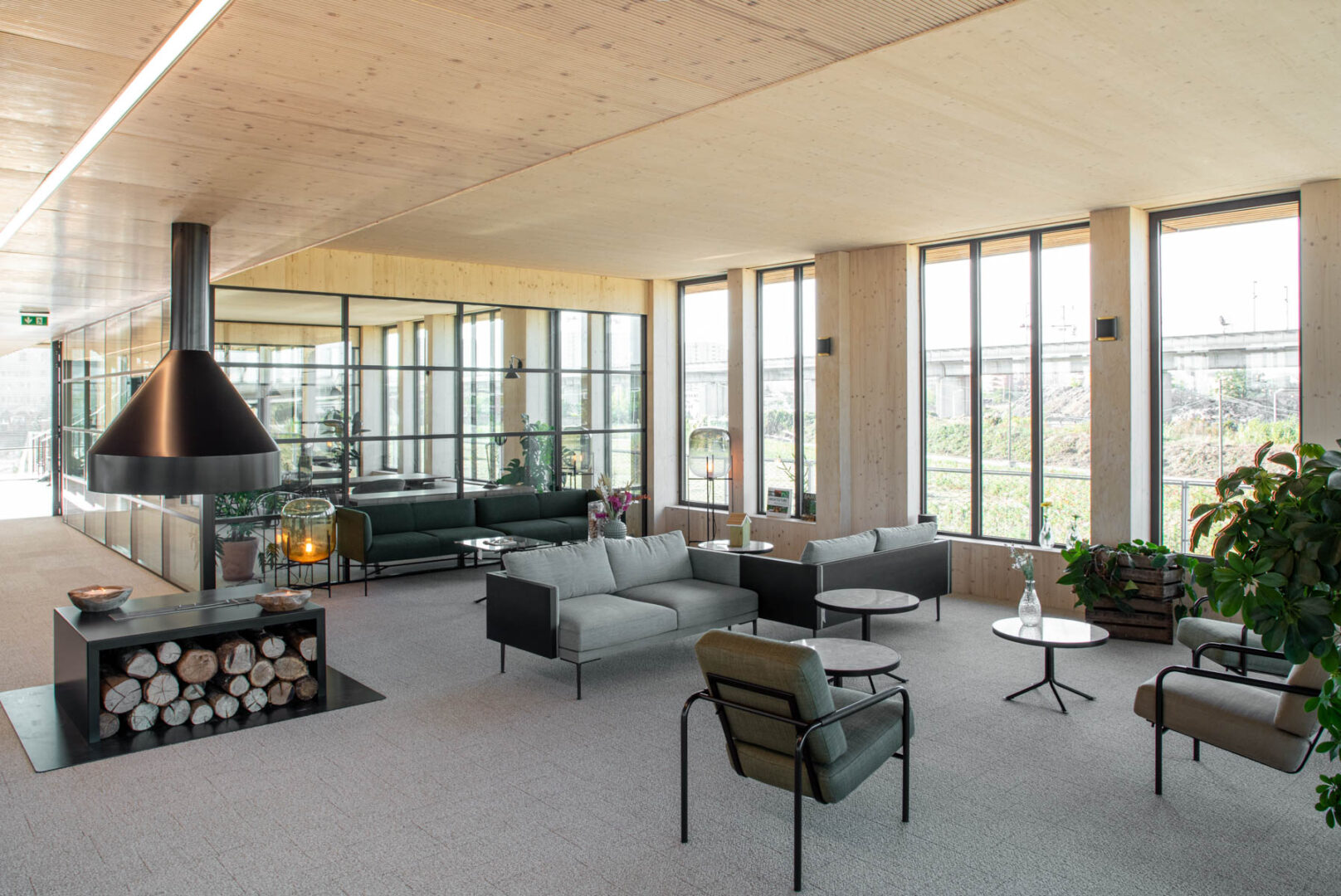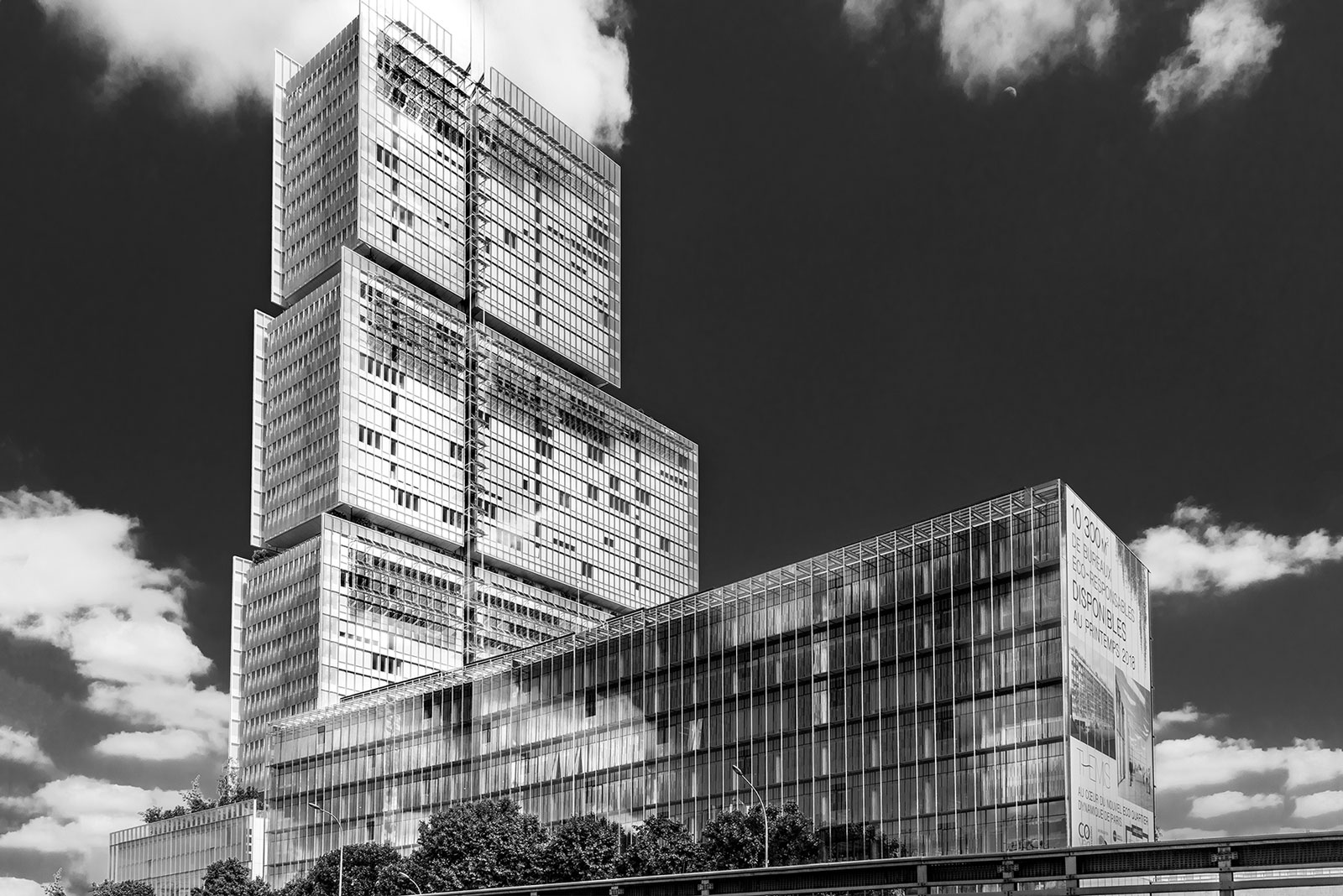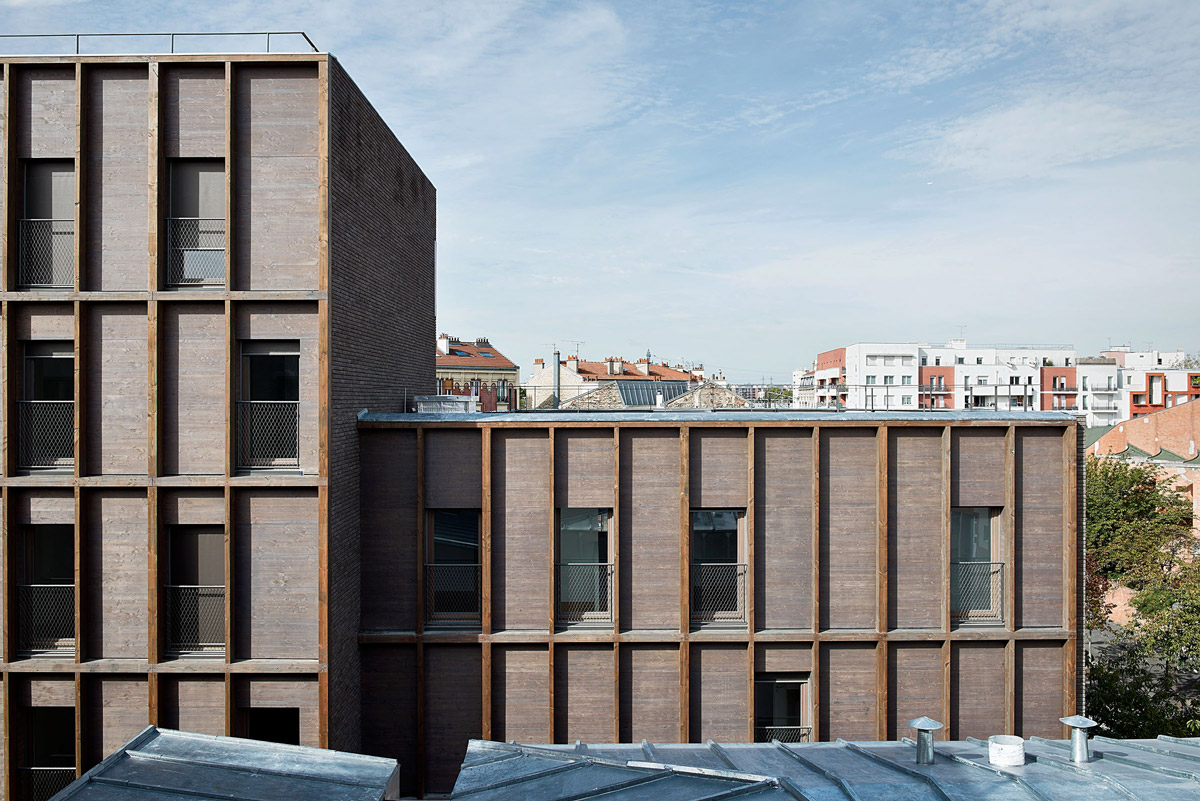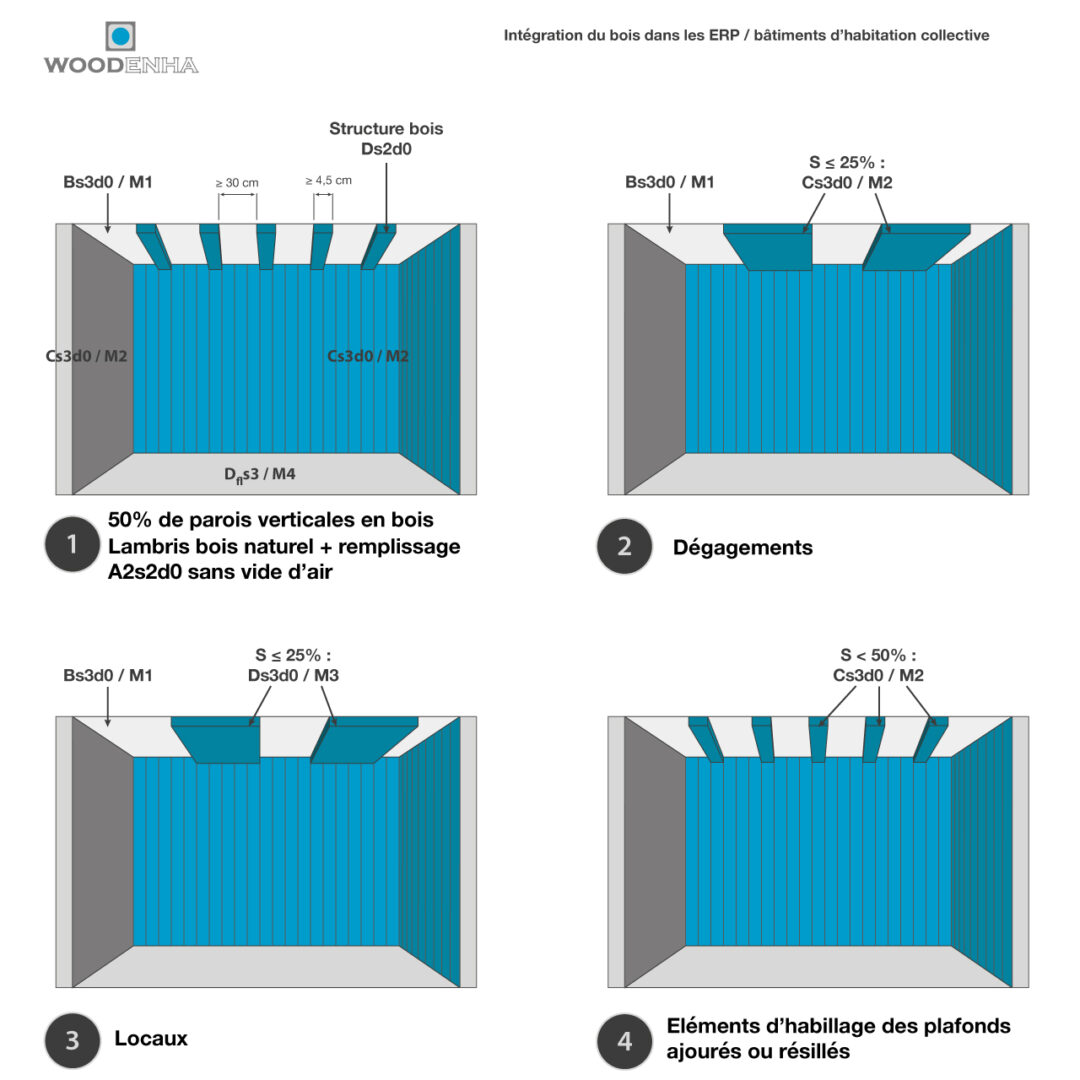Fire retardant wood in buildings
Passive fire protection, of which fireproofing is a part, is a tool for conquering the wood products market in the construction of public-access buildings (ERP) and interior or exterior fittings.
Woodenha Industries has more than 10 years of experience in the fireproofing of solid wood and materials based on natural fibers: many buildings have been built using Woodenha Industries services
Fire reaction vs. Fire resistance
Fire resistance characterizes the behavior of a structure facing a fire. When a fire grows, the collapse of the building must be avoided and the spread of flames must be minimized. French regulations speak of fire stability (SF) to designate the bearing capacity of a structure, flame retardant effect (PF) to designate the fire and hot gas sealing-effect of a wall (door, partition) and finally a firebreak effect (CF) to designate fire resistance with thermal insulation (controlled temperature rise on the unexposed side).
The fireproofing of wood would certainly improve the fire stability of a structure but it is not taken into account today by the structural calculation. European regulations are theoretically in place and do not use the same codes: SF becomes R, PF becomes E and CF becomes EI.
Reaction to fire characterizes the fire behavior of materials that can be used in structures, as potential fuels. This reaction to fire is gauged by the M classification (french standards) and now the Euroclass classification (european standards). It is represented by the ability of the material to burn and spread the fire.
Looking for a fire expertise ?
Consult us for the opinion of a Woodenha expert
Which solutions for an Euroclass-C wood cladding ?
In many cases, for example when the “C + D” rule is not satisfied for residential buildings (from 3rd family B) or some ERP (Public Access Buildings), the facade cladding must be Euroclass C. This is roughly the equivalent of the M2 grade that has been used until then in France. By default and by decree, wood in its natural state has at best an M3 grade (Euroclass D) and in no case an Euroclass C (M2) as it is possible to see suggested by some unofficial sources. No French or European document presents a document with conventional classifications for wood and derivatives better than Euroclass D.
Woodenha Industries can give wooden construction systems a Euroclass C or even Euroclass B by impregnating under vacuum and pressure in an autoclave a flame-retardant product that matches the objectives of the Classification Reports written by the approved laboratories following the tests.
This firep-retardant product is moderately washable and its effect could fade over time for wood exposed to the weather. This is why Woodenha Industries also propose the application of a wood saturator called BIME®F1 which has several objectives:
- improve the washout protection of flame retardants
- reduce the dimensional variations of the wood and thus improve its surface condition over time
slow the graying of wood - give the wood a tint if wished by the architect.
This finish has passed many tests in approved laboratory (FCBA) and has been proven to keep the wood fire classification unchanged (non-degrading), property validated by numerous FCBA Classification Reports.
This BIME®F1 saturator has even successfully passed a standardized test of artificial aging (12 weeks in QUV – EN 927-6). The objective of this test was to measure the effectiveness of the flame retardant treatment after aging and the test is positive: an M2 material keeps its M2 classification after the test and also the European tests of NF EN 16 755.
Natural aging tests were carried out and confirmed this durability of the fire classification.
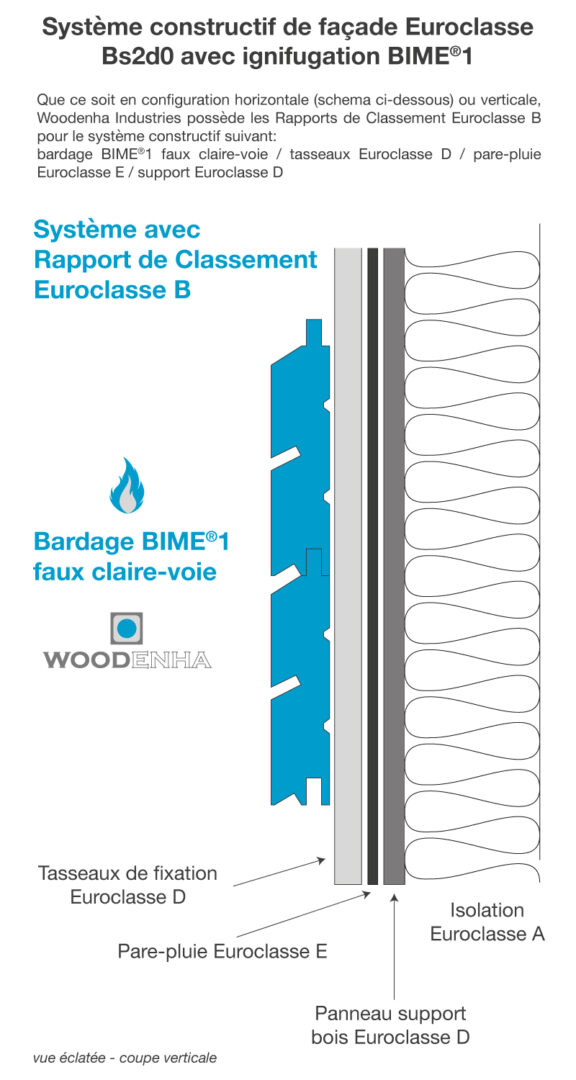
Which solutions for a Euroclass-B wooden ceiling ?
In ERP-type buildings (Public Access Buildings), French regulations require the use of Euroclass B products for the ceiling. In the case of wooden ceilings, in a large majority of cases, fireproofing is required and Woodenha Industries provides two options :
1 – Autoclave impregnation + drying + finishing as required
Autoclave impregnation treatment is colorless and has no effect on the appearance of the wood. On the other hand, it is sensitive to humidity and must – if necessary – be covered with specific non-degrading finishes. Moreover, a delay to delivery must be forecasted due to the drying time of the wood in the process.
2 – Intumescent varnish or intumescent paint
Varnish or intumescent paint can be applied on site if the woods are already built up. In this case, their implementation is carried out in a shorter period of time than impregnation in an autoclave. The intumescent finish appearance is film-forming, even if it can be very matt and therefore very subtle. It performs two operations in one: fireproofing and finishing. These intumescent finishes are also the only method to date to improve both the reaction and resistance to fire of materials.
Whether made with panels or linear elements (slats or battens), Woodenha Industries has many references of Euroclass B wooden ceilings using the two techniques described above.

